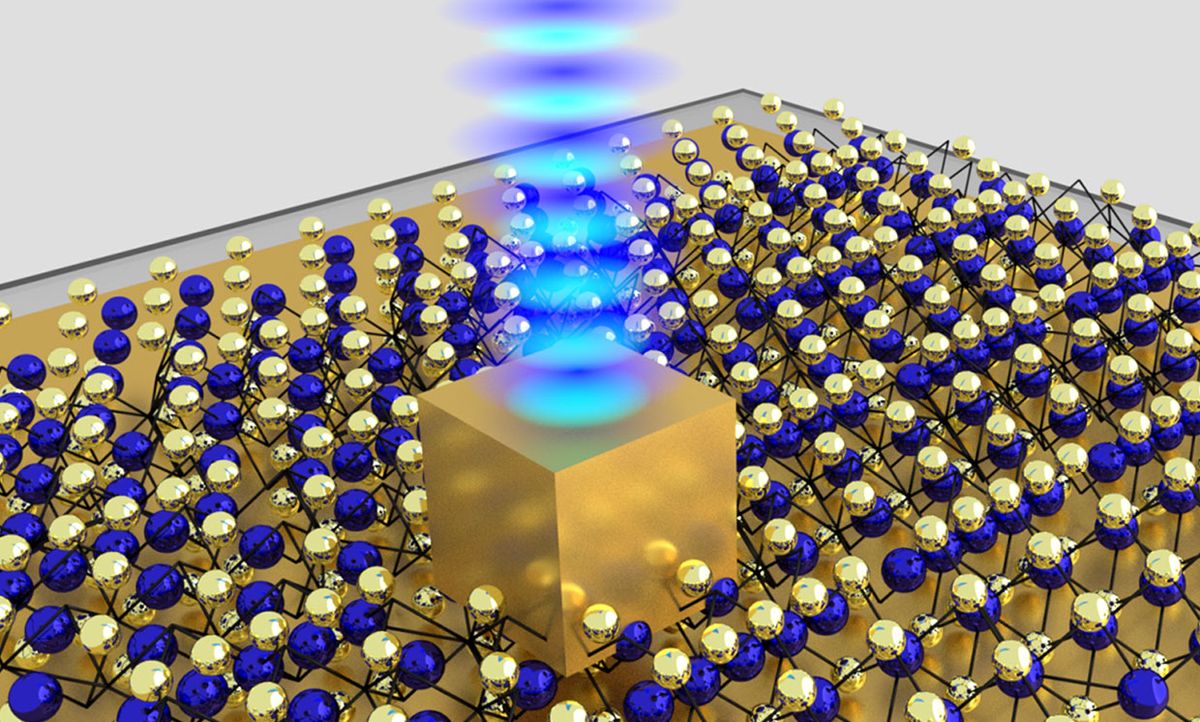Recent efforts by two national labs to build a new quantum network to boost U.S. capabilities in unhackable communication technologies just got a key technology to further those aims.
Researchers at Stevens Institute of Technology have developed an on-chip quantum emitter capable of emitting one photon of light at a time with a previously unattainable spatial resolution and efficiency. This advance could prove key to the development of unbreakable cryptography and quantum computers.
For the past decade, quantum dots have been the de facto approach for creating on-chip quantum emitters. In these quantum emitters, one photon is emitted at a time, as opposed to classical light, where trillions of photons are scattered everywhere.
However, one of the scientists behind that research from over a decade ago was never quite satisfied with how you couldn’t control where the quantum dots would emit their one photon of light. Stefan Strauf, a professor at Stevens and coauthor of this most recent research, described in Nature Nanotechnology, was looking for something other than quantum dots to serve as a material for an on-chip quantum emitter.
“The spatial control is not there for quantum dots because they grow at random locations,” said Strauf. “It is just like throwing molecules from a solution on a wafer and letting them dry out. The quantum dots are not very different than that.”
The result with quantum dots is that you could never get good spatial coupling between the photon emitter and the cavity around it, which serves as an antenna for directing that photon. While Strauf acknowledges that it’s always possible to find one particularly good quantum dot that will allow you to put a cavity around it, you couldn’t have one right next to it with a specific distance and geometry.
Because of these limitations of quantum dots, Strauf and his colleagues abandoned them altogether and took a different approach for quantum emission: two-dimensional tungsten diselenide stretched over an array of gold nanocubes.
Tungsten diselenide is different from a quantum dot or a nanowire in the sense that it's like a plane or a wafer, according to Strauf. “It's like the same clean slate that you have if you take a silicon wafer and put a billion transistors onto it,” he added.
While the tungsten diselenide provides a two-dimensional slate to start creating something scalable, on its own it doesn’t emit quantum light. Instead, it emits light like a lightbulb, with photons emitted in huge numbers everywhere. To overcome this, the trick was to make the quantum emitter with the very same thing that forms the cavity: the gold nanocube.
The top plane of the gold nanocube is a little mirror that traps the light against its bottom plane, which is also a mirror. If you stretch the tungsten diselenide over the nanocubes, then the point where the monolayer is pushed against the sharp nanocube edge becomes a kind of funnel. This funnel traps the carriers in the material at a very tiny location, and at that particular location, the emission then becomes a quantum light emitter.
“These gold nanocubes basically act as a minuscule nano-antenna that harvests the single photon stream and funnels it into that particular direction,” said Strauf. “Not only does this allow you to direct where you can couple the photon to a fiber and a fiber network, but you also can drastically enhance the emitter rates.”
Strauf acknowledges that by using quantum dots as on-chip quantum emitters, you can get many more of them on a chip. However, he insists it's not the number of quantum emitters that’s important but the ability to control their spatial location and emission efficiency.
“You don't have to make a large array of cavities like in the past, where you would put 10,000 on a wafer and then you throw your quantum dots or nanowires or whatever on it and then probe hundreds of them to find maybe one or two that are coupled,” he said. “With this approach, they are all coupled with 100 percent success rate.”

In fact, in their approach, Strauf and his colleagues have demonstrated 60 single photon sources, with every one of them being coupled to a cavity in a deterministic way. If you had 60 quantum emitters using previous approaches, only one or two of them would actually be coupled to a cavity, according to Strauf.
The difficulty in any kind of quantum device is that you need coherence. Coherence in quantum systems refers to the stability of superposition states in which, for example, an electron spins in two opposite directions at the same time. To achieve that coherence requires extraordinary cooling in quantum emitters because the light emission itself can be suppressed at elevated temperatures.
This means that for any material to work as an efficient quantum light source, it needs to be cooled. For instance, quantum dots need cooling to emit light. But several other systems, called color centers, don't need cooling, and they can be hosted in diamond or boron nitride crystals. While color centers don't need cooling, they can't be spatially controlled. This latest device can be spatially controlled but must be cooled.
“What we're working towards is finding ways to make these quantum emitters not only work at a very low temperature, but to make them work at higher temperatures,” said Strauf.
Strauf said that they also aim to make the device operate electrically rather than just optically, so that it could operate with current being applied, rather than being triggered with a laser.
Dexter Johnson is a contributing editor at IEEE Spectrum, with a focus on nanotechnology.



